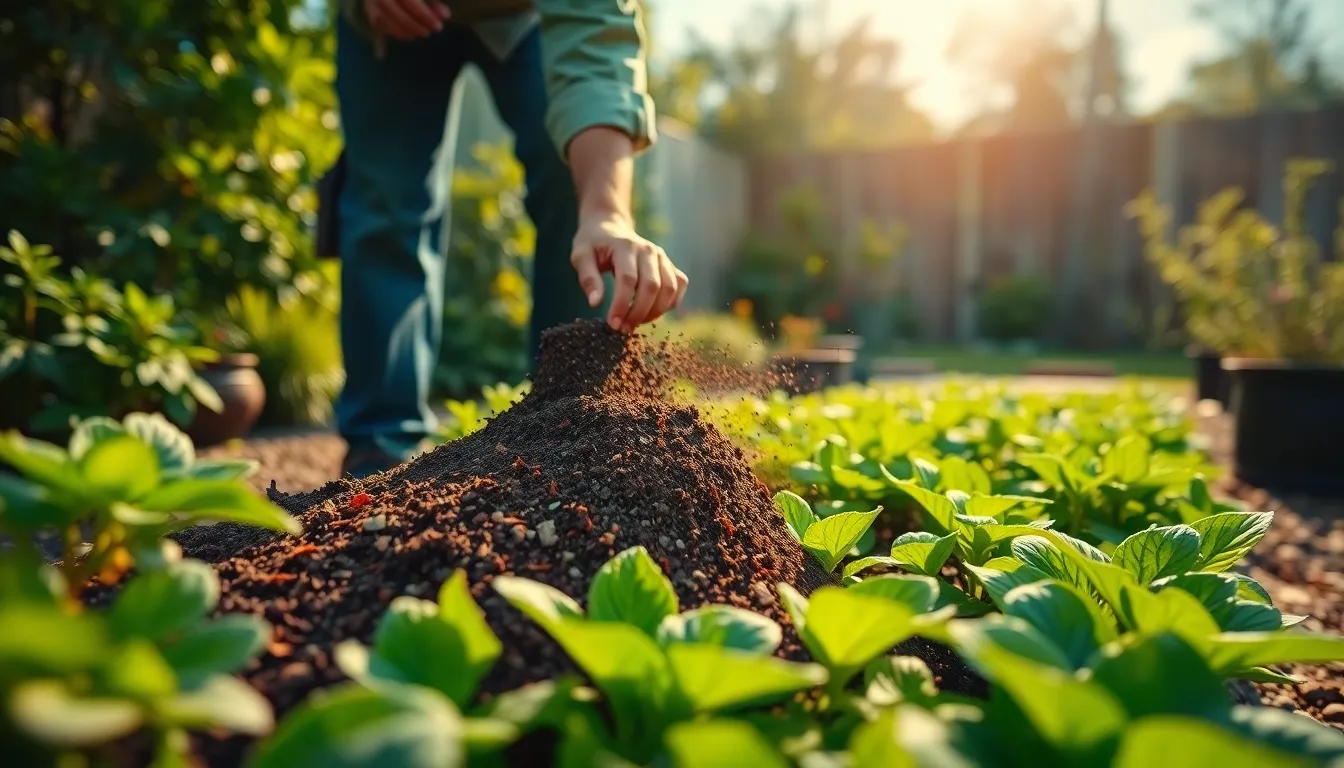Wood ash might seem like a gardener’s best friend, but not all plants share that sentiment. While some thrive on the nutrients it provides, others would rather avoid it like a bad date. Picture this: a delicate fern, sipping on its morning dew, suddenly confronted by a pile of wood ash. It’s not a match made in heaven!
Table of Contents
ToggleUnderstanding Wood Ash
Wood ash contains essential nutrients such as potassium, calcium, and magnesium. Many gardeners utilize these benefits in their soil. However, not every plant thrives in its presence. Certain types of plants, particularly those sensitive to pH changes, struggle when exposed to wood ash.
Using wood ash raises soil alkalinity. Some plants prefer acidic or neutral soils, making them less compatible with wood ash’s alkaline nature. For example, azaleas and rhododendrons tolerate acidic soils, so wood ash can hinder their growth. Similarly, blueberries and cranberries flourish in lower pH levels, further exacerbating the mismatch.
Salinity can also pose a problem with wood ash. High salt content can stress plants like carrots and beets. When over-applied, wood ash can create imbalances, leading to the potential for nutrient deficiencies. It’s crucial to monitor application rates to avoid harming sensitive crops.
Understanding individual plant preferences plays a significant role in successful gardening. Delicate ferns and other shade-loving plants typically don’t adapt well to changes in soil chemistry caused by wood ash. Observing plant responses ensures healthier growth and flourishing gardens. Using appropriate amendments tailored to specific plant needs enhances overall success and sustainability.
Consider creating a soil test before adding wood ash. Testing provides insights into current soil conditions, allowing for informed decisions. Adjustments can be made based on results. Choosing the right amendments leads to optimal plant health and productivity.
Benefits of Wood Ash for Plants

Wood ash offers several benefits that can enhance garden health when used appropriately. First, it acts as a natural source of essential nutrients like potassium, calcium, and magnesium. Potassium supports fruit development, calcium strengthens cell walls, and magnesium aids in photosynthesis.
Gardeners often apply wood ash to improve soil structure. Ash can also help increase drainage in heavy soils, leading to better root development. Improved drainage prevents waterlogging, which benefits many plants.
Another advantage lies in its ability to boost soil alkalinity. While some plants thrive in alkaline conditions, others struggle. Therefore, it’s vital to know which plants prefer such environments.
Wood ash may also aid in pest control. Sprinkling it around plants can deter certain pests like slugs and snails, reducing the need for chemical treatments.
Using wood ash contributes to sustainable gardening practices. Recycling byproducts like ash helps decrease waste while enriching garden soil.
Applying wood ash carefully can improve nutrient availability in the garden. Regular monitoring of soil pH ensures that beneficial effects do not disrupt plant growth.
Understanding the balance between benefits and specific plant needs remains essential. Gardeners must consider the unique preferences of their plants before using wood ash as a soil amendment.
What Plants Don’t Like Wood Ash
Wood ash influences plant growth negatively for certain species. Its alkalinity and salt content can hinder the health of sensitive and perennial plants.
Sensitive Plants
Sensitive plants include species like ferns and certain vegetables. They thrive in environments with limited alkalinity, which wood ash increases. Applying wood ash to sensitive plants stresses them due to high salt levels. This salt can cause wilting or reduced growth, especially in carrots and beets. It’s important to observe these plants closely after application, as any signs of distress indicate an adverse reaction to wood ash.
Perennial Plants
Perennial plants also face challenges with wood ash. Azaleas, rhododendrons, and blueberries prefer acidic conditions. Wood ash disrupts this acidity, creating an unsuitable environment. Nutrient imbalances may arise from excessive wood ash application, adversely affecting their long-term health. Monitoring the growth of perennial species helps identify any negative impacts. Advising caution with wood ash around these plants can promote a healthier garden overall.
Negative Effects of Wood Ash
Understanding wood ash’s negative impacts on certain plants helps gardeners make informed decisions. Some plants significantly suffer due to its properties.
Soil pH Alteration
Wood ash raises soil alkalinity. Acid-loving plants, such as azaleas and blueberries, struggle to thrive in alkaline conditions. Increased pH from excess ash leads to nutrient availability issues, disrupting essential uptake. Sensitive species, particularly those requiring lower acidity, may exhibit poor growth or even die. Monitoring soil pH after applying wood ash is crucial for maintaining a healthy garden.
Nutrient Imbalance
Nutrient levels can shift dramatically with wood ash use. Potassium levels may skyrocket, overshadowing the needs of specific plants. Beets and carrots are particularly vulnerable to over-application, leading to stress and wilting. High potassium can also impede the absorption of magnesium and calcium. Regular soil testing reveals nutrient status, allowing gardeners to adjust application rates accordingly.
Understanding which plants don’t thrive with wood ash is vital for successful gardening. While wood ash can enrich soil for many species it can create challenges for those that prefer acidic conditions. Plants like azaleas and blueberries may suffer from elevated pH levels and nutrient imbalances.
Gardeners should remain vigilant and conduct regular soil tests to gauge pH and nutrient status. This proactive approach ensures that the use of wood ash aligns with the specific needs of each plant. By recognizing the unique requirements of different species gardeners can cultivate a thriving and balanced garden ecosystem.





